site search
online catalog
ARTILLERY 2nd LIEUTENANT’S FROCK COAT, COMMISSION TIN, AND BILLFOLD OF LT. A. T. MCMILLAN (MACMILLAN) BATTERY C 1st RHODE ISLAND LIGHT ARTILLERY
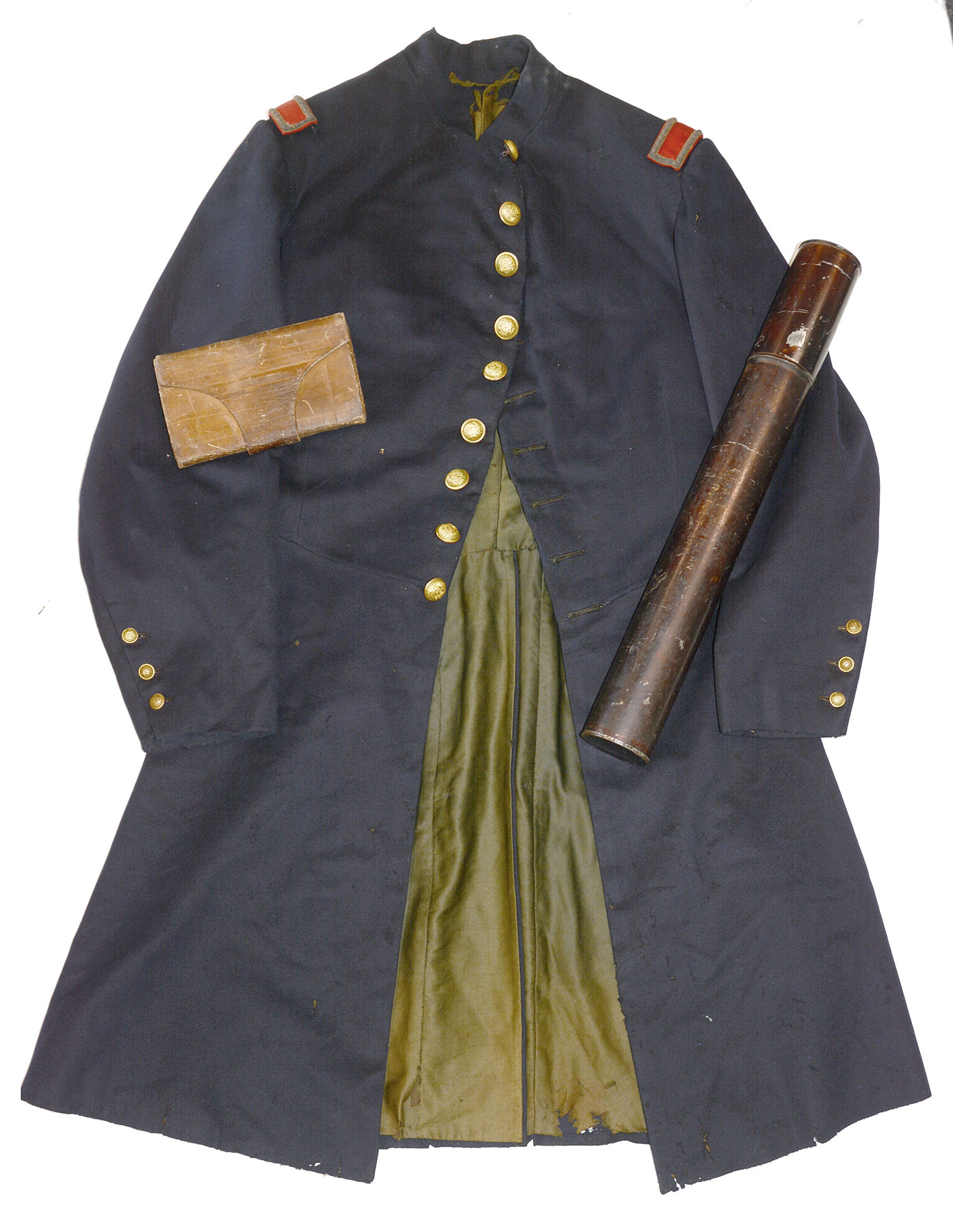
Hover to zoom

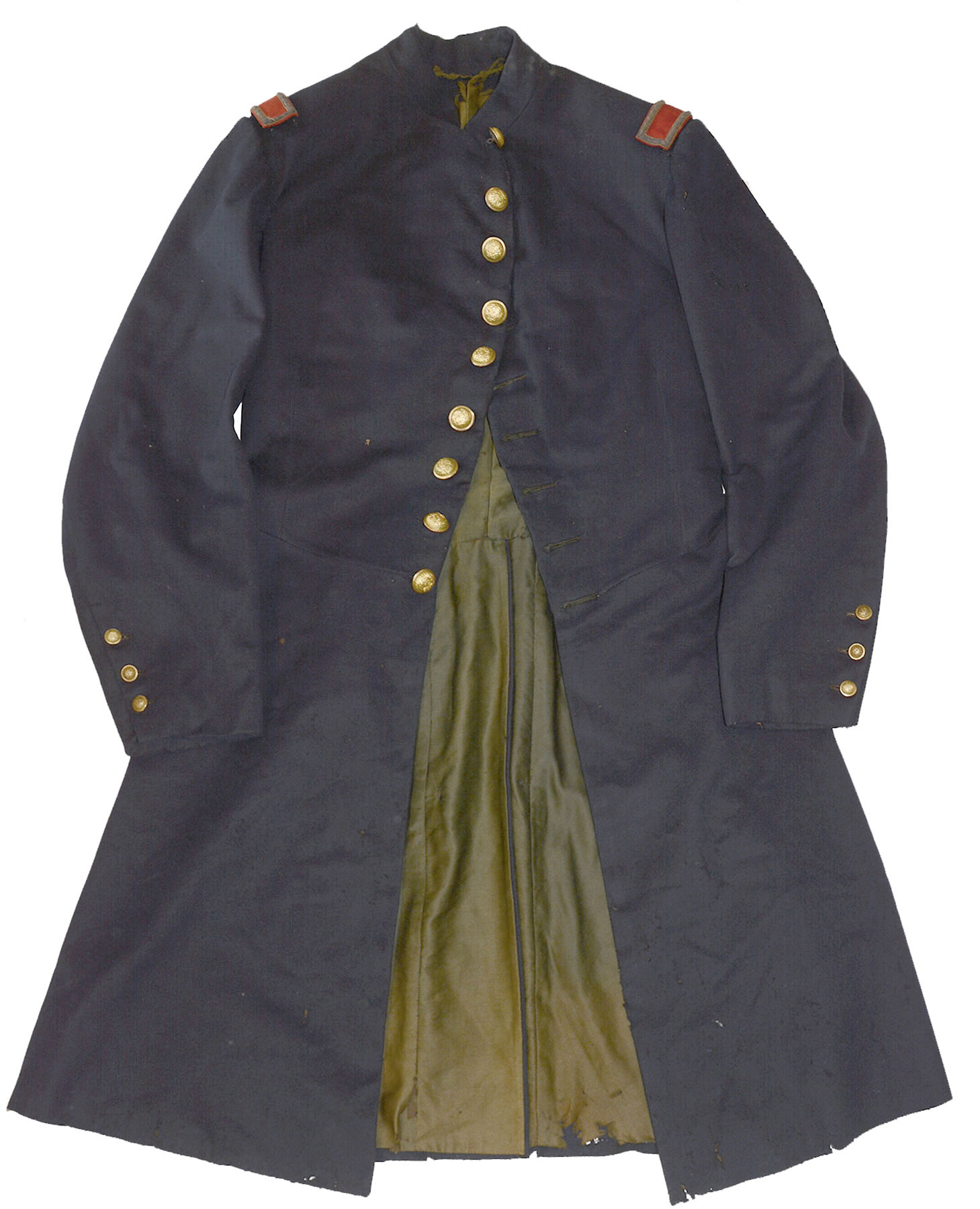
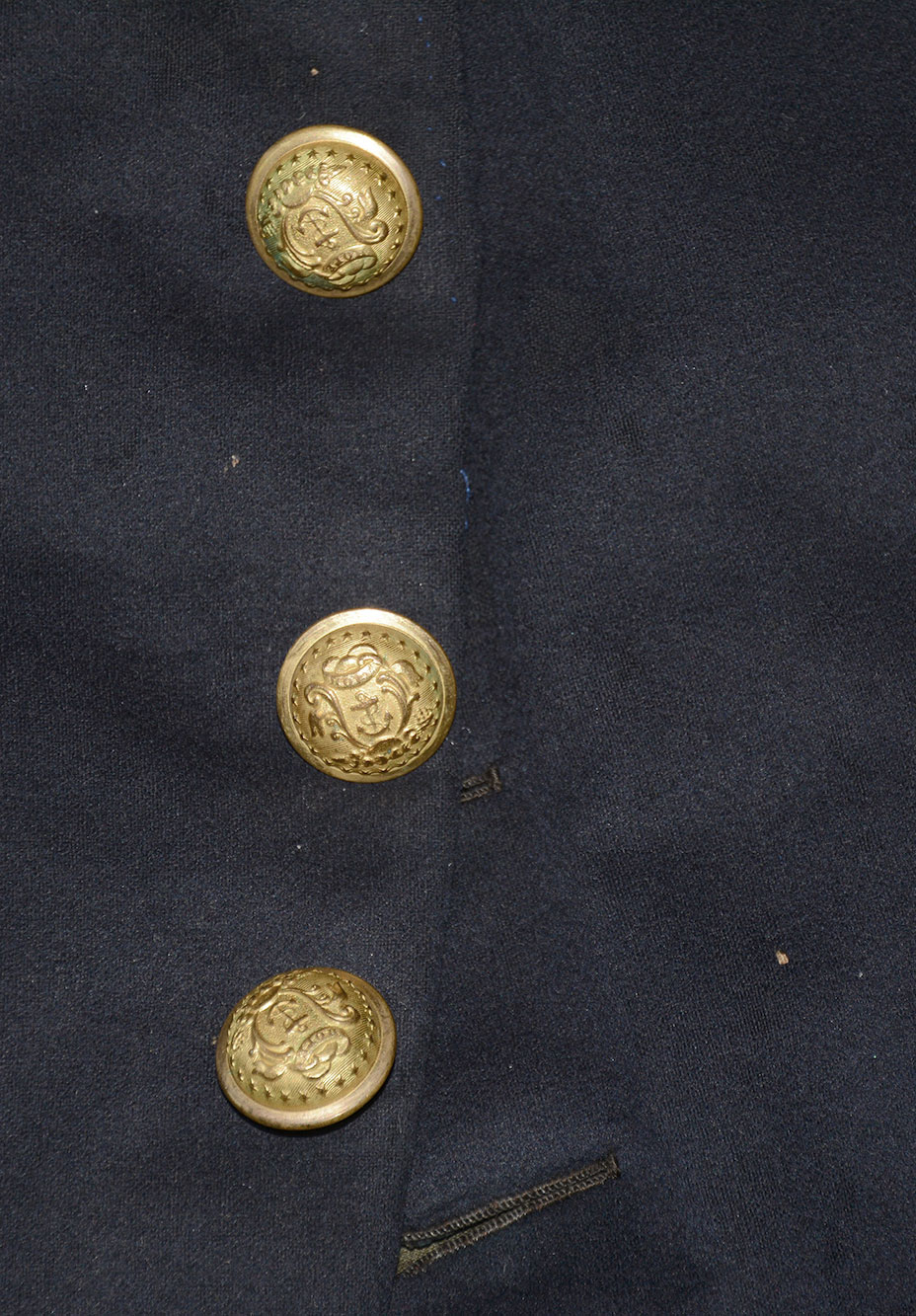
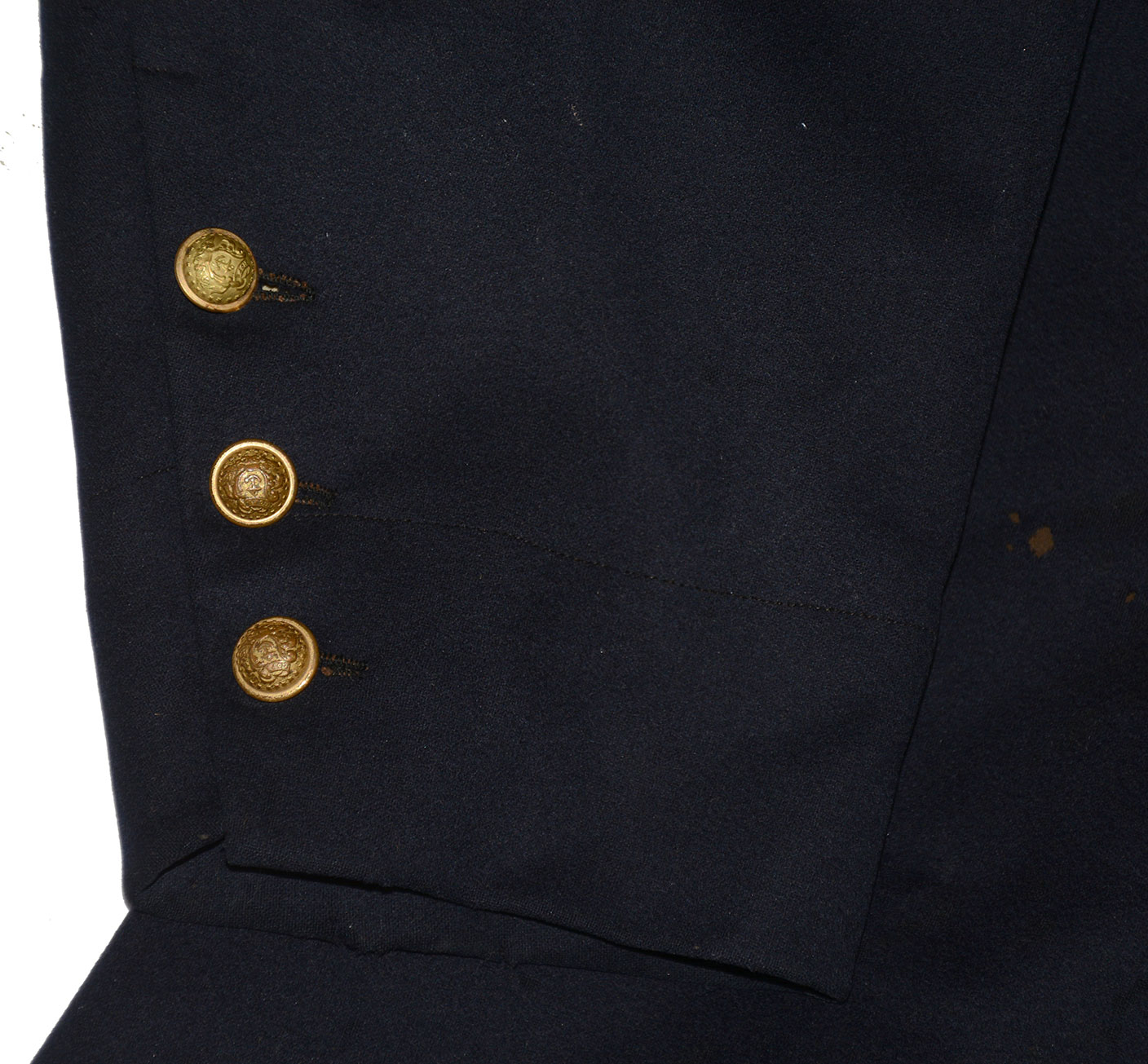
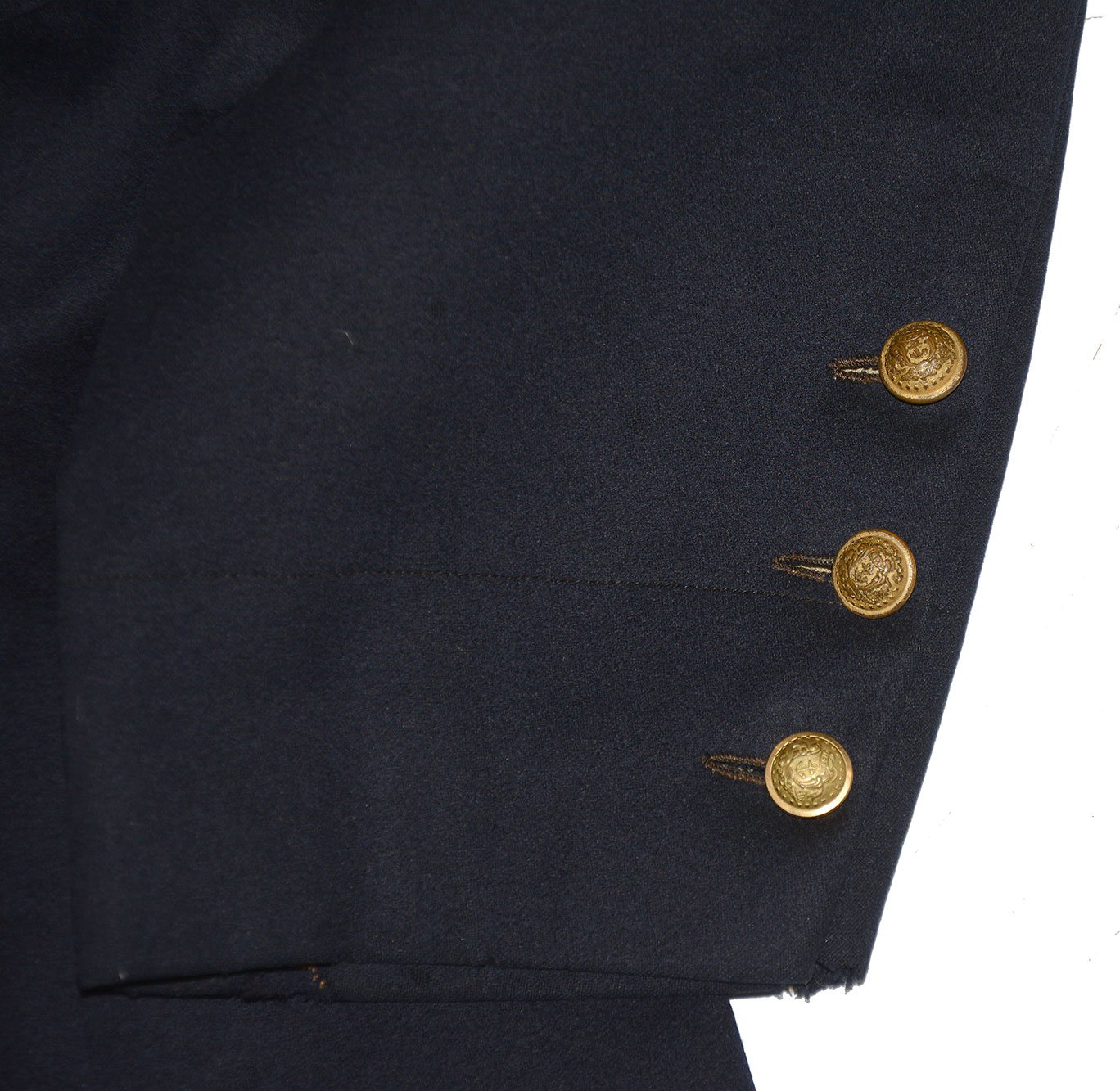
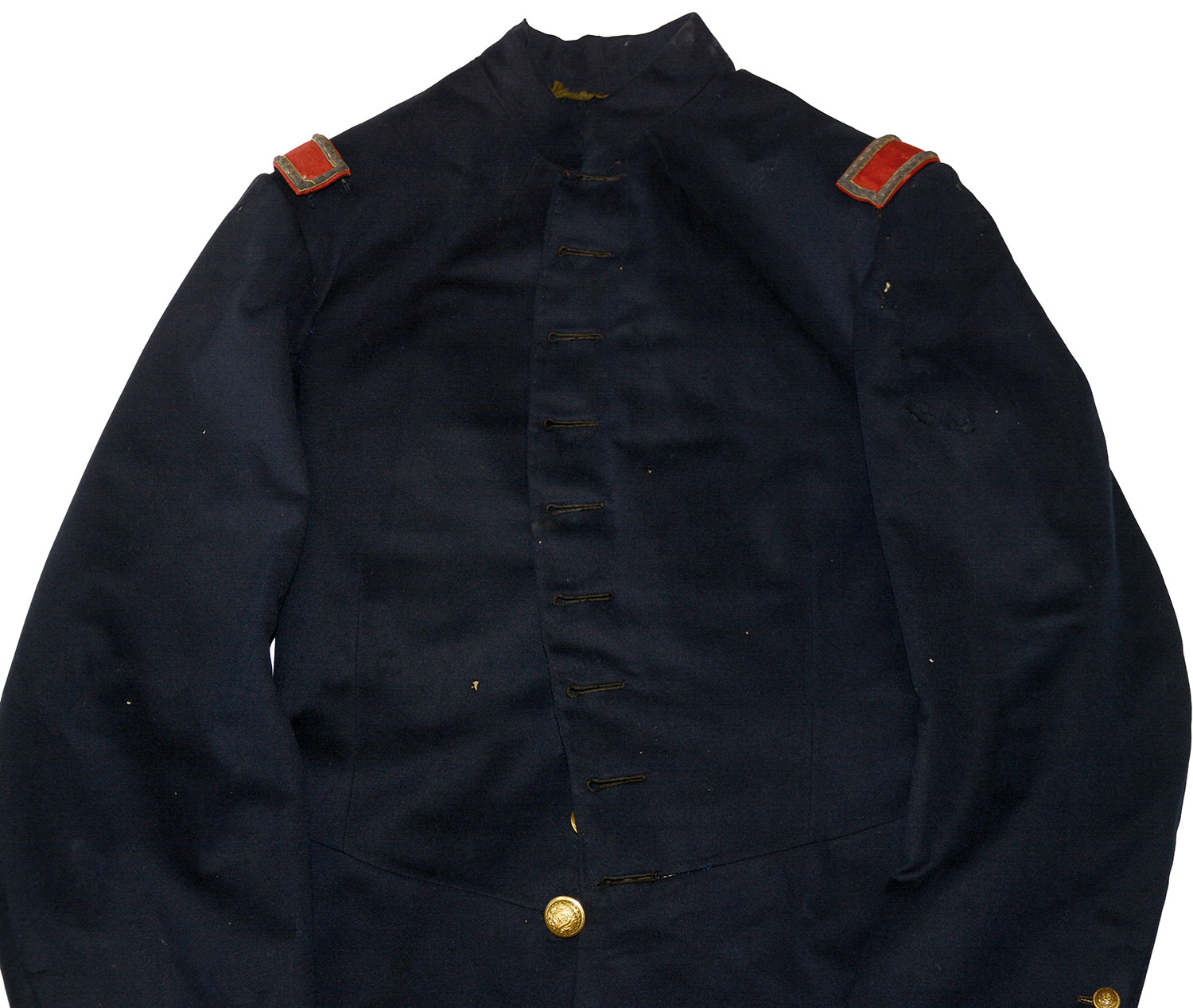
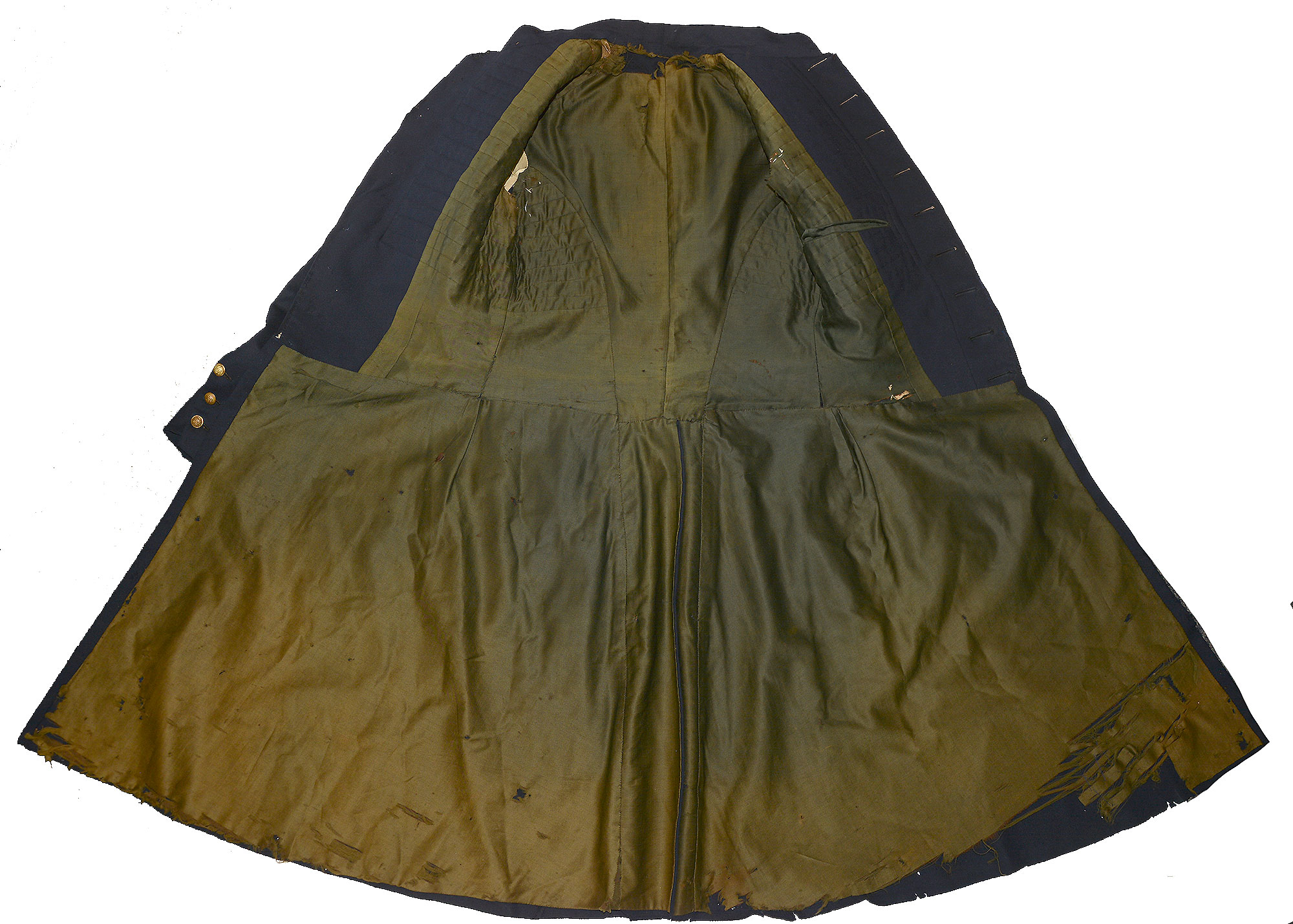
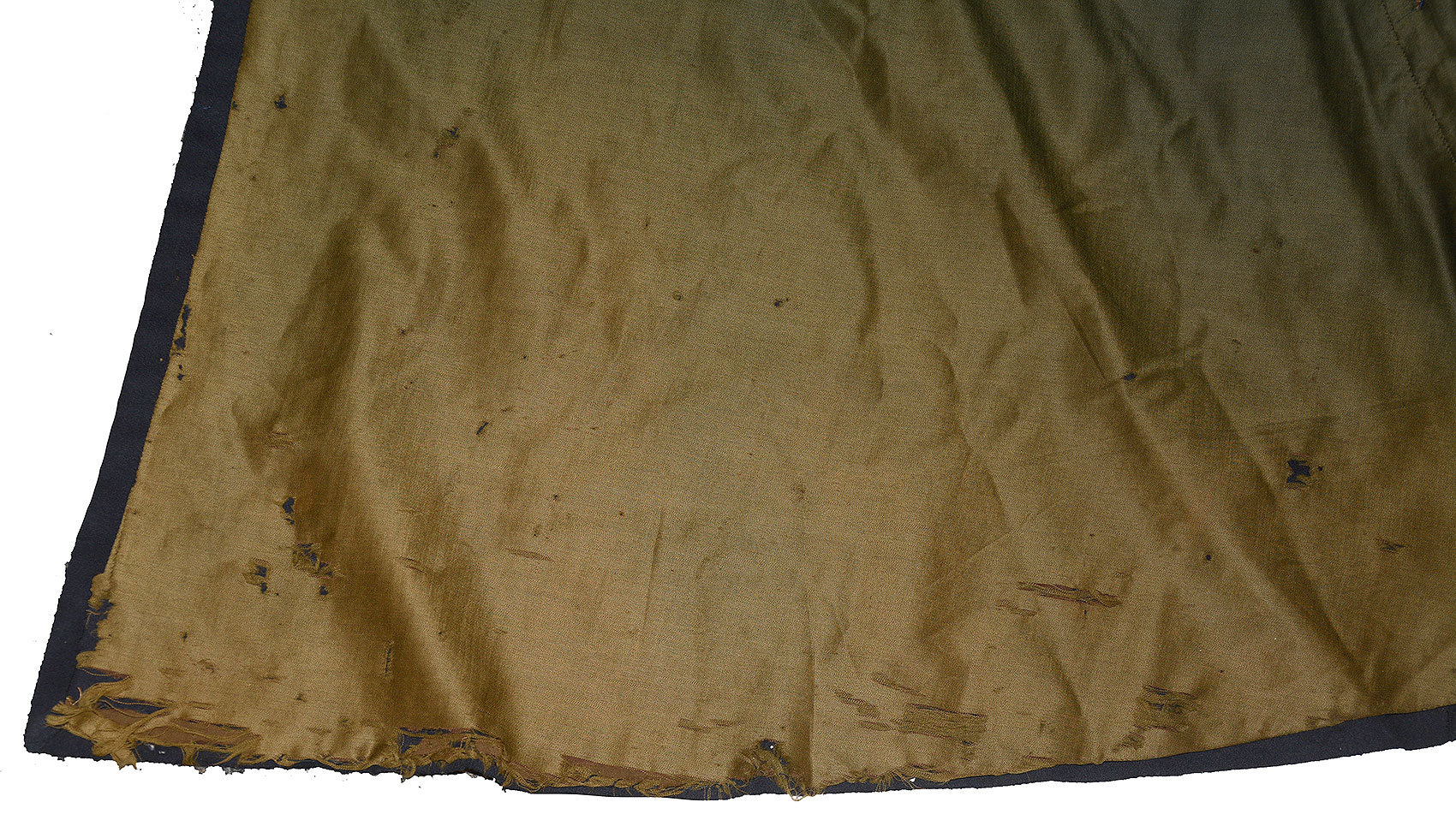
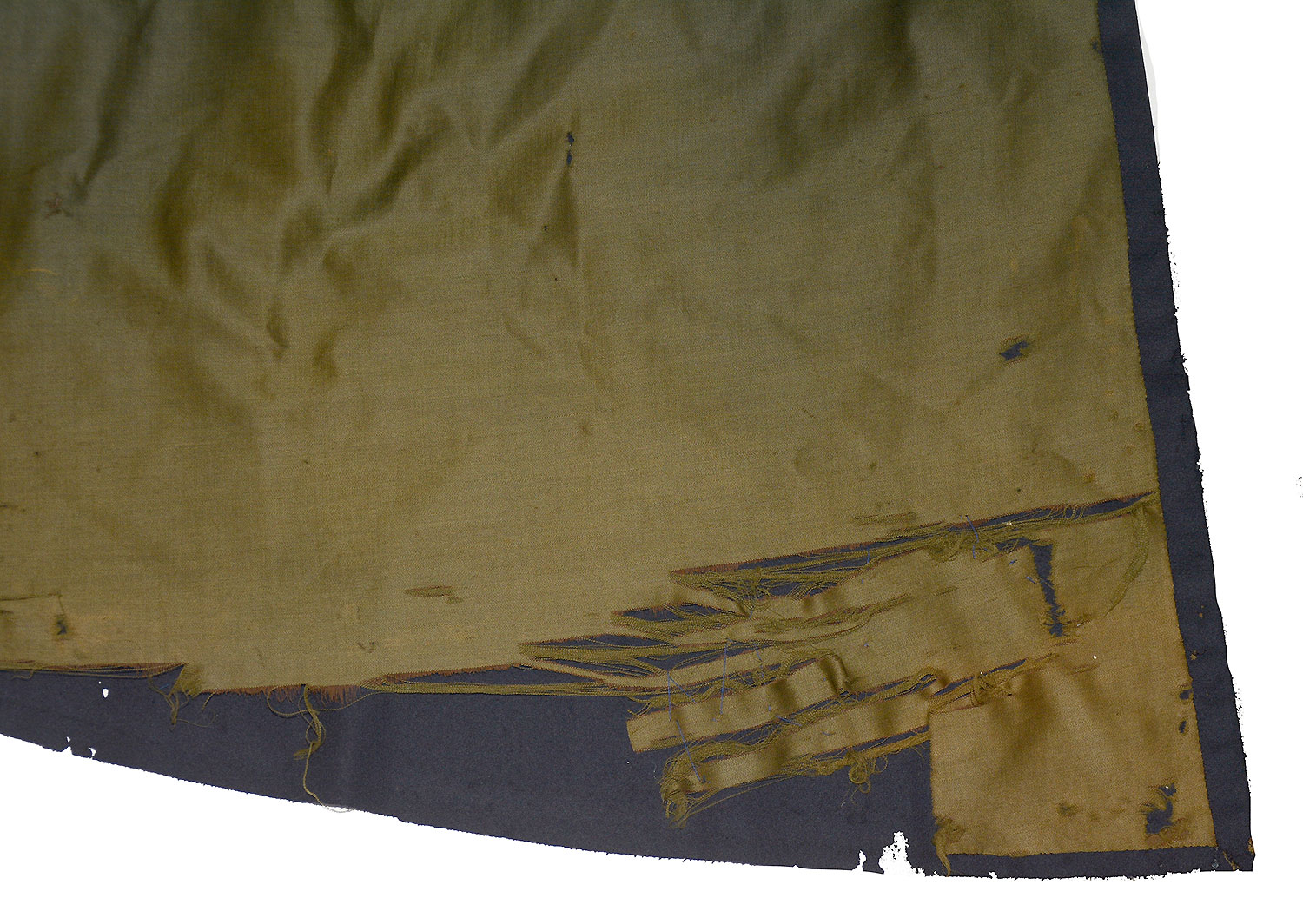
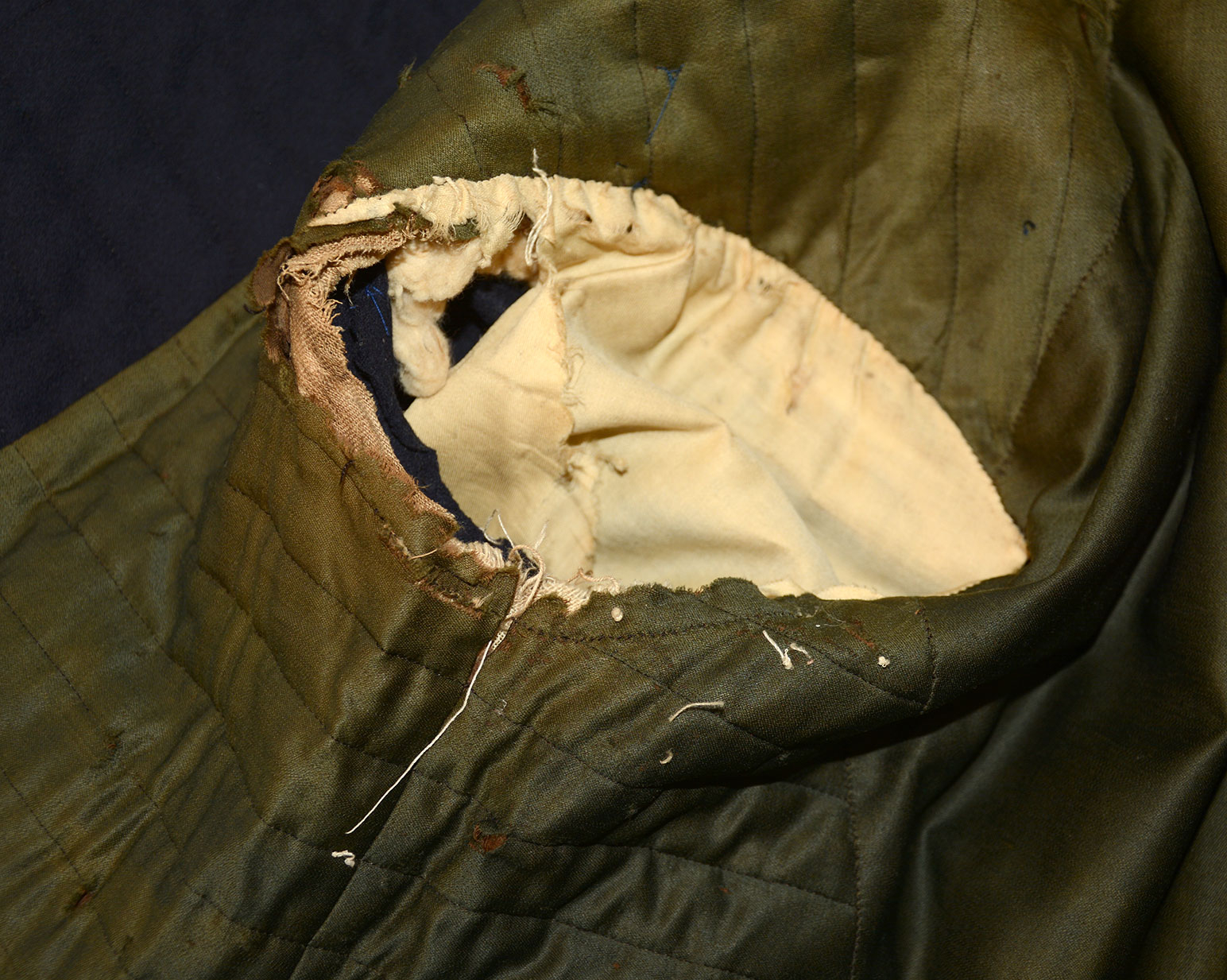
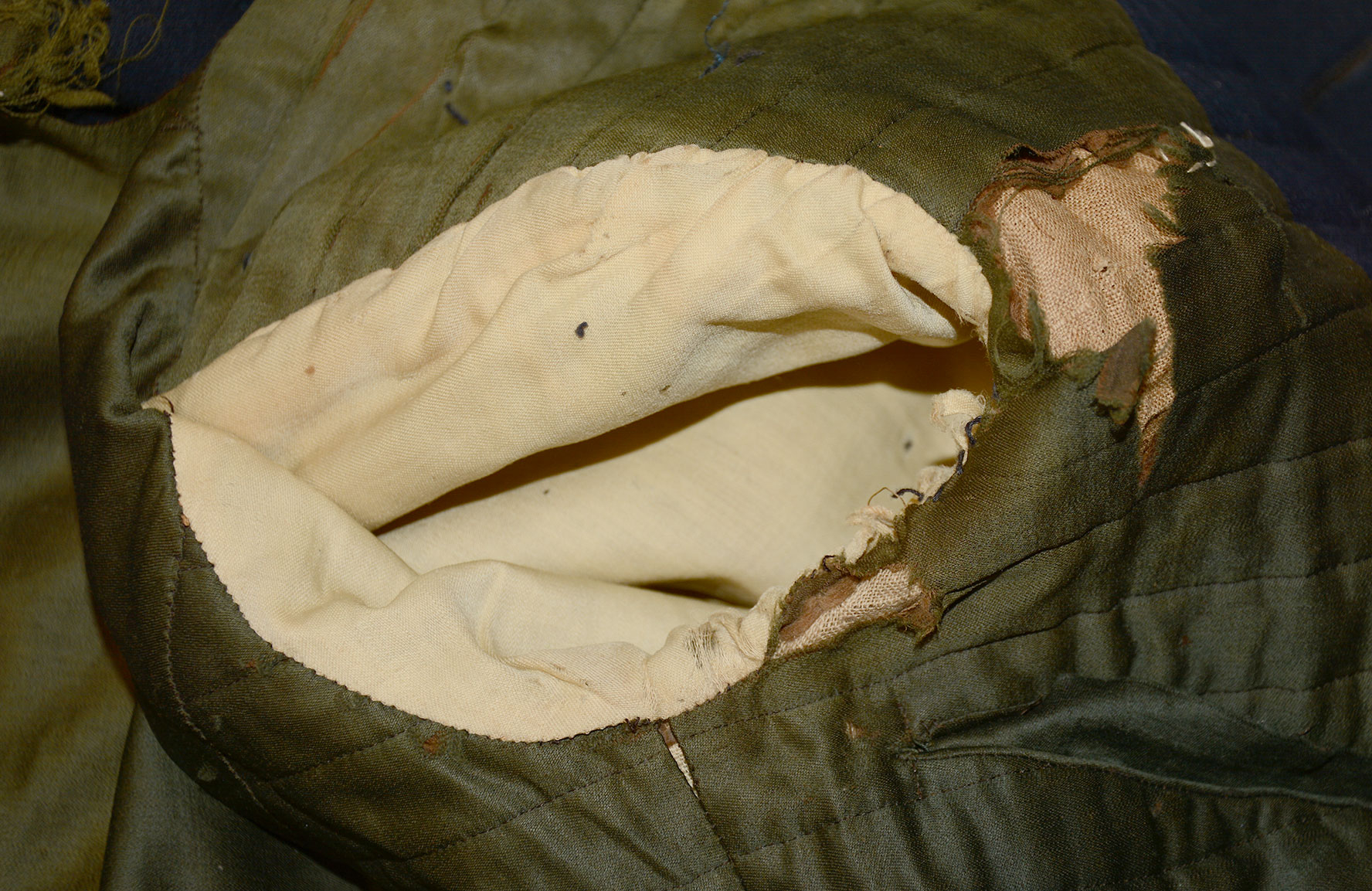
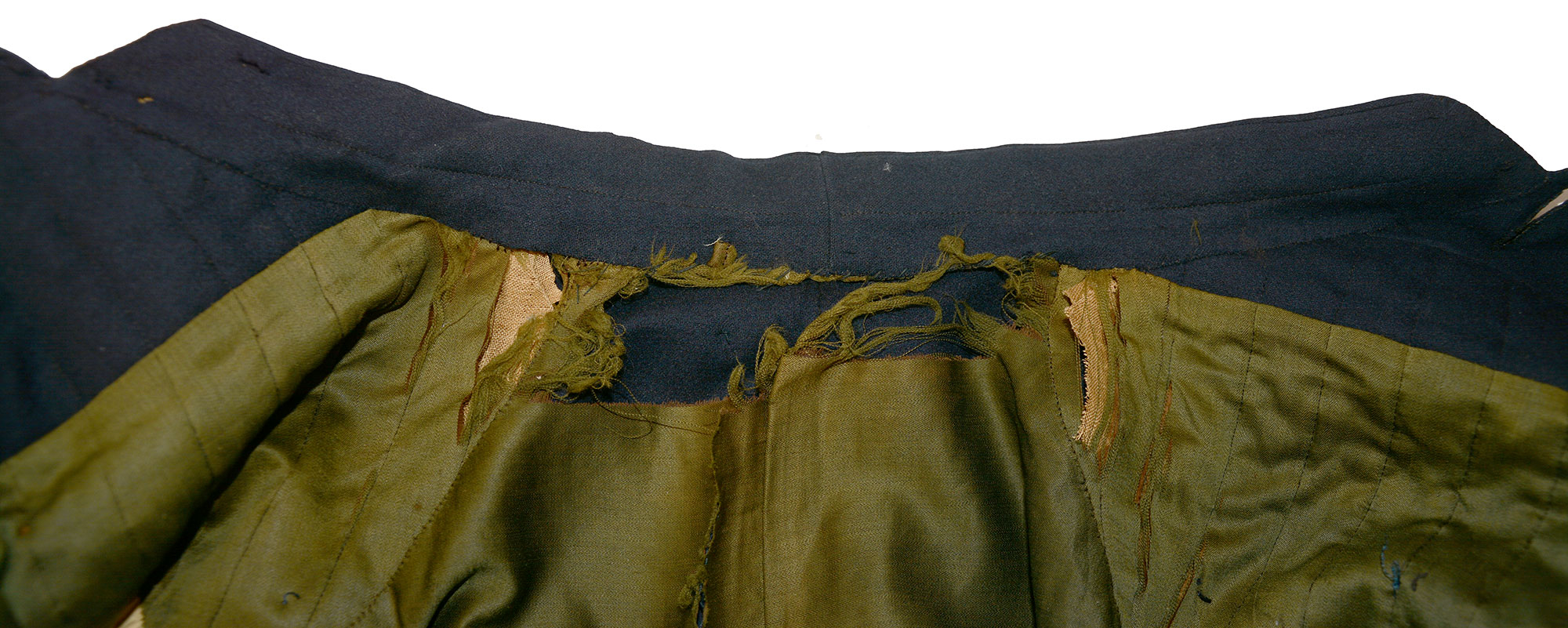
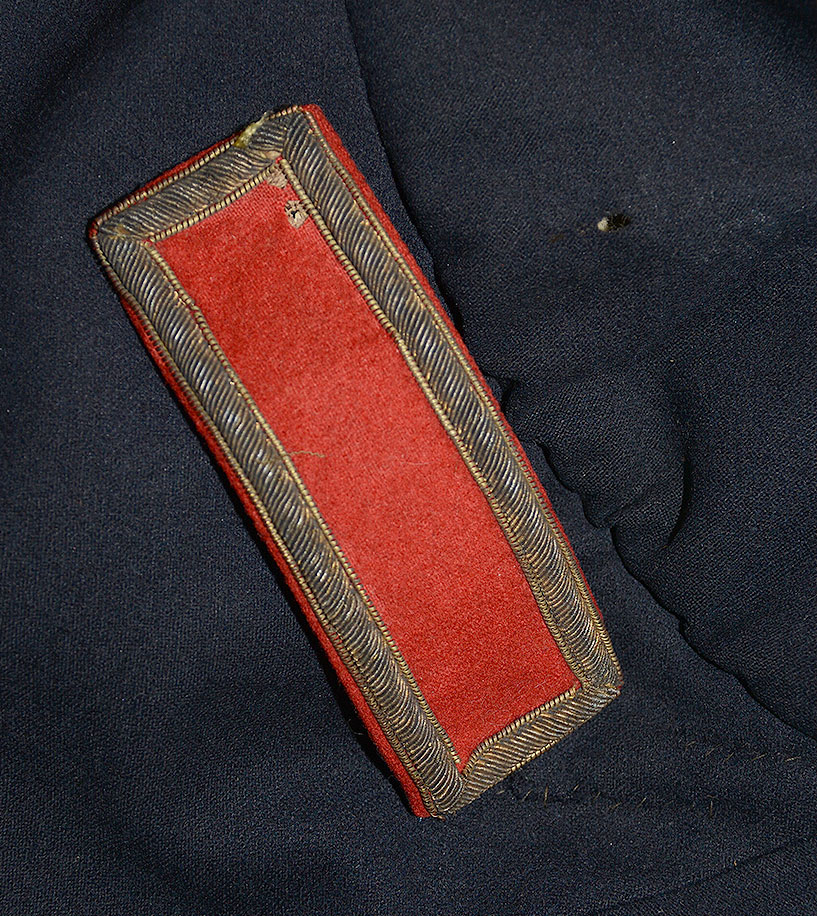
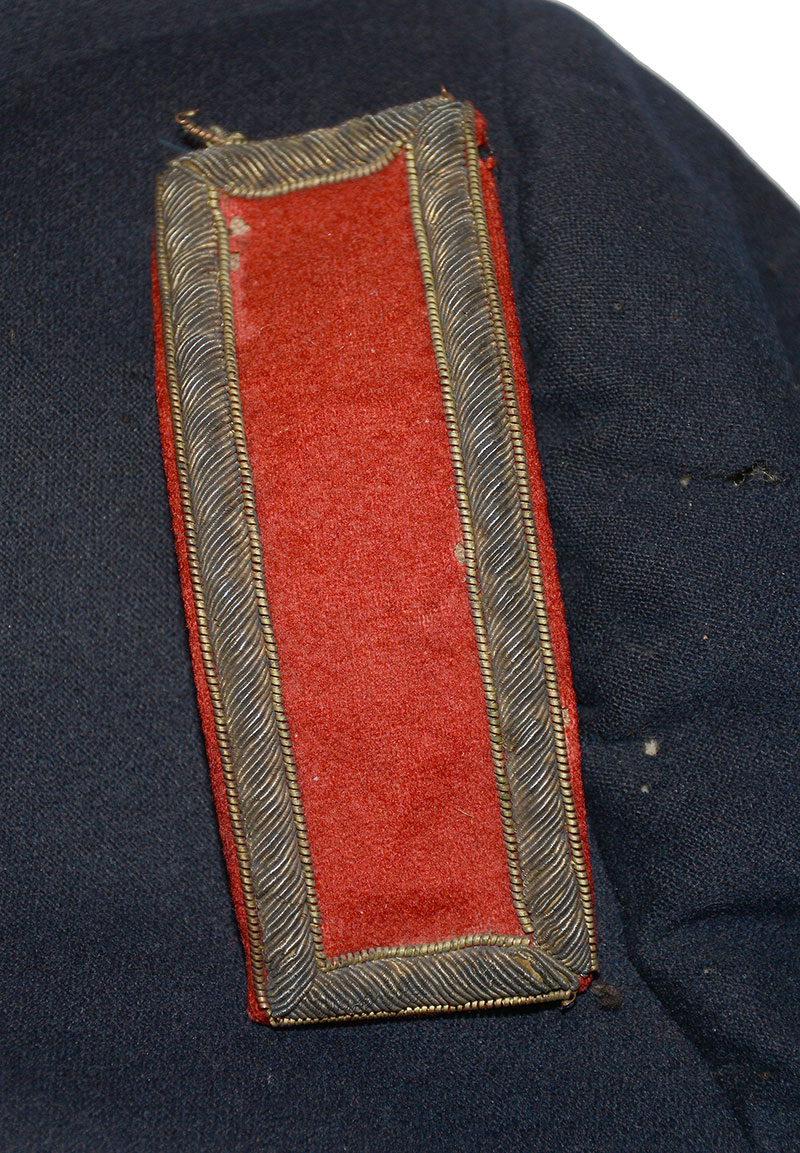
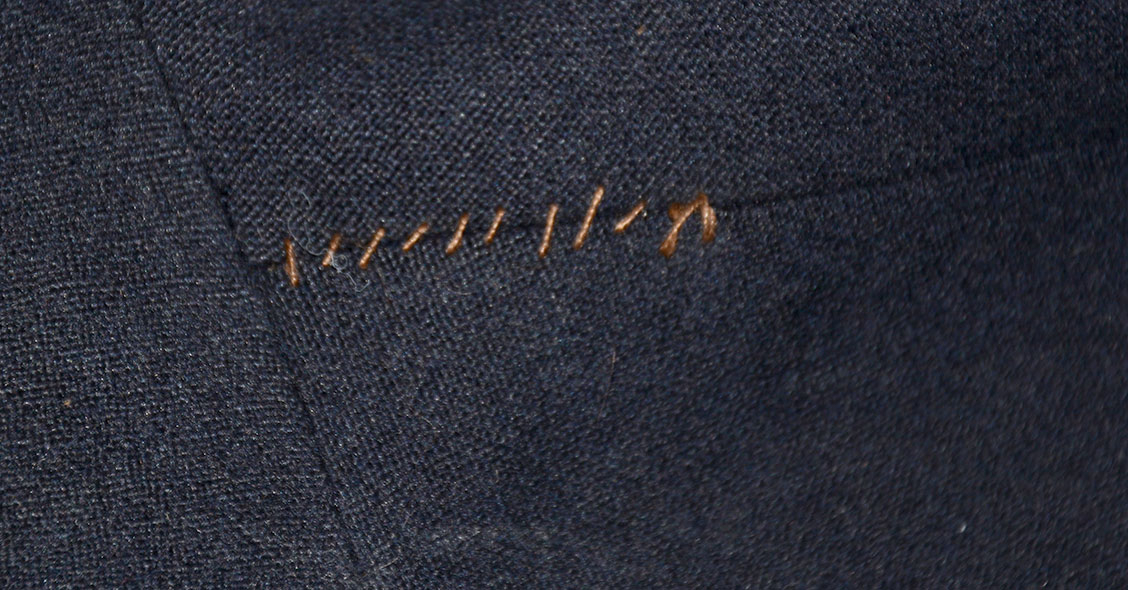
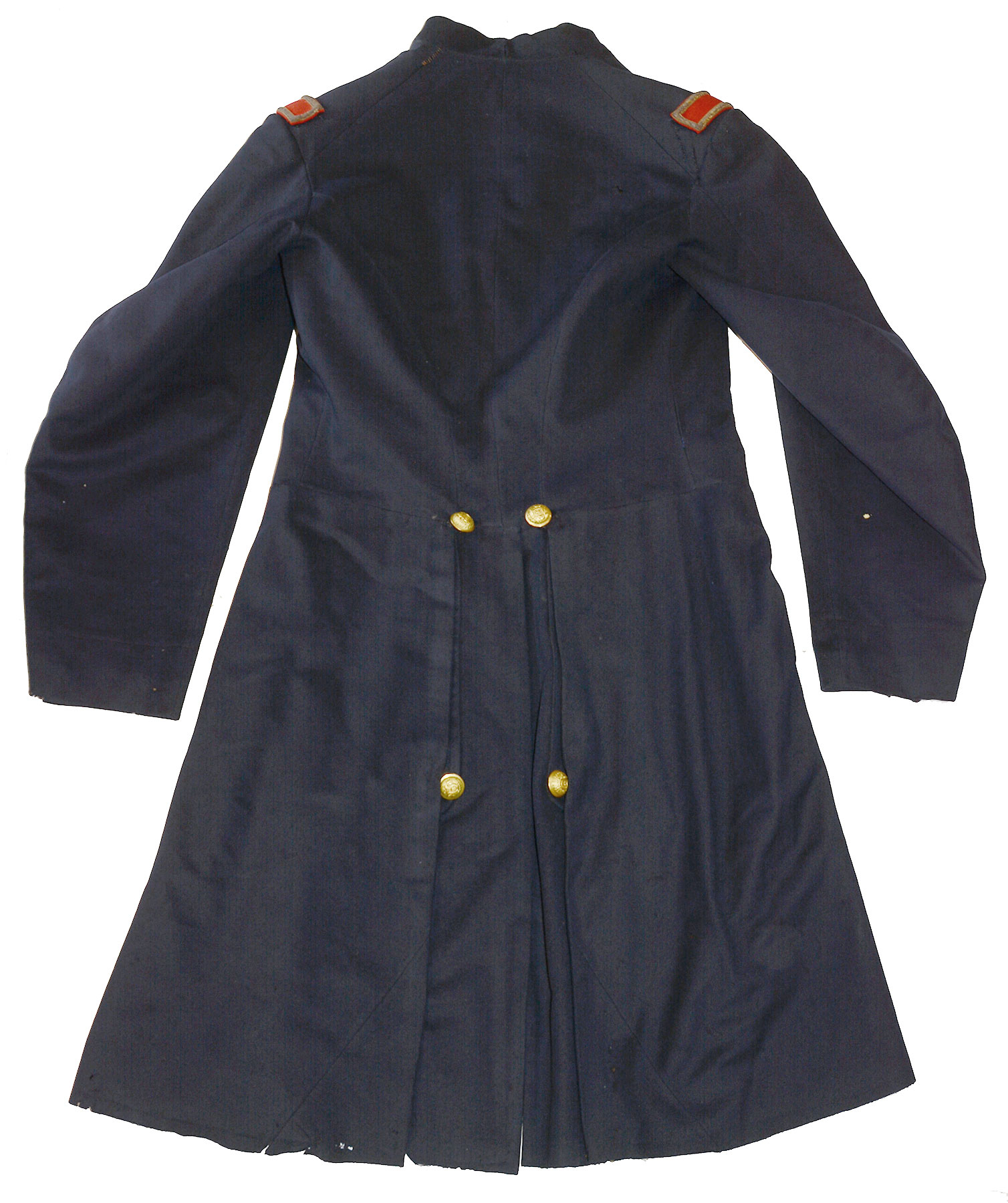
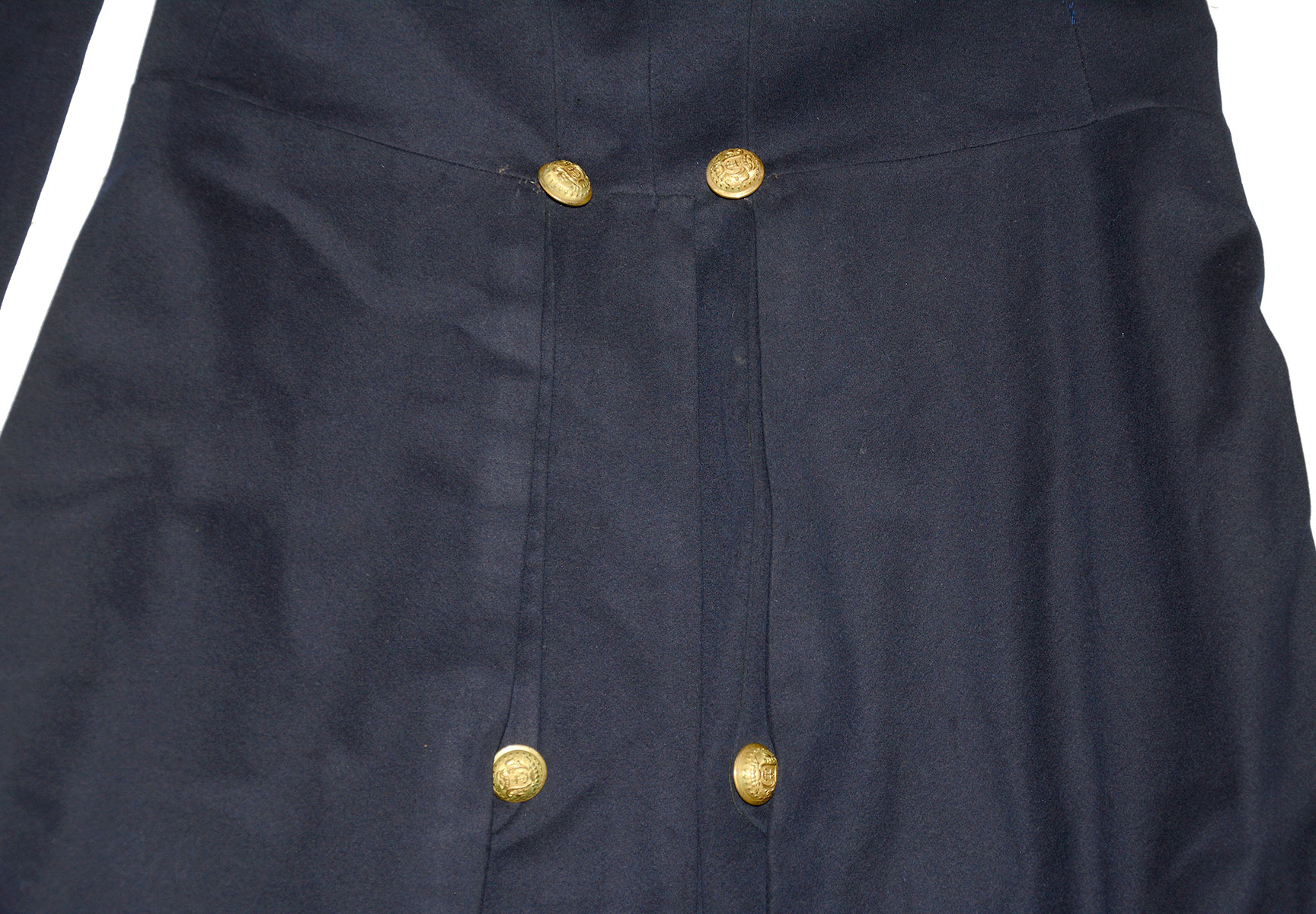

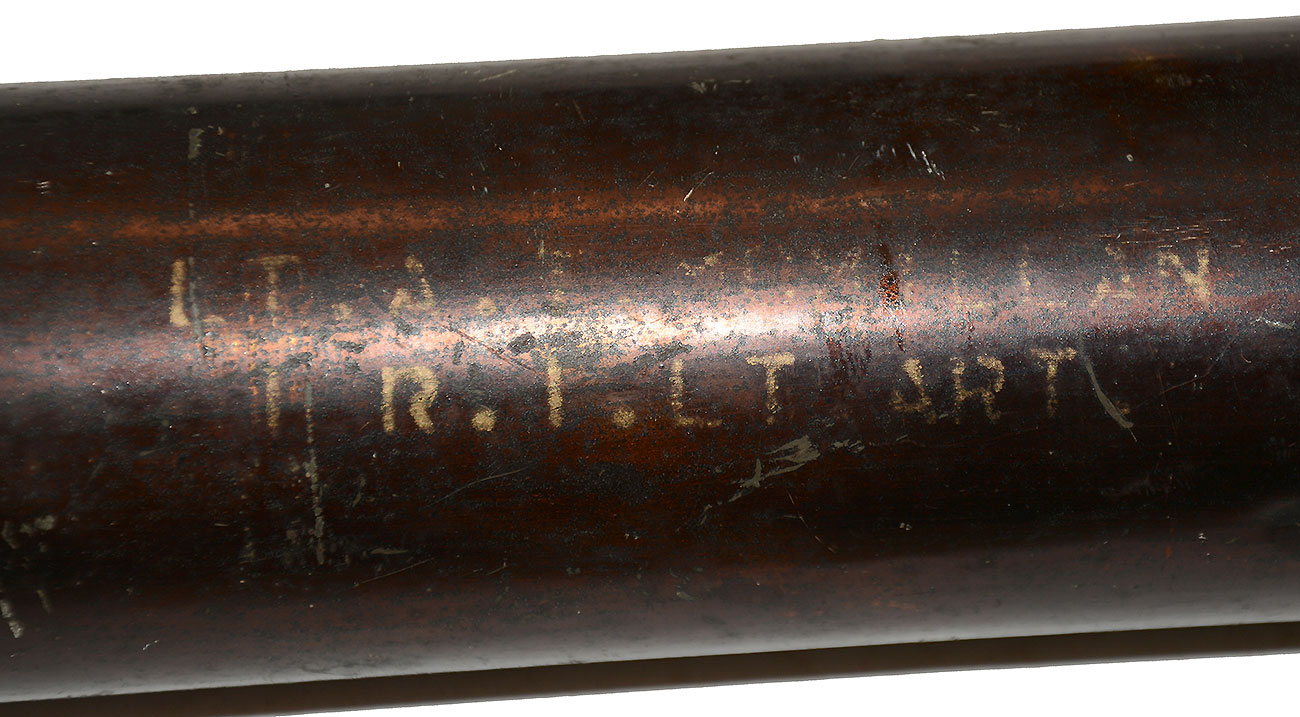

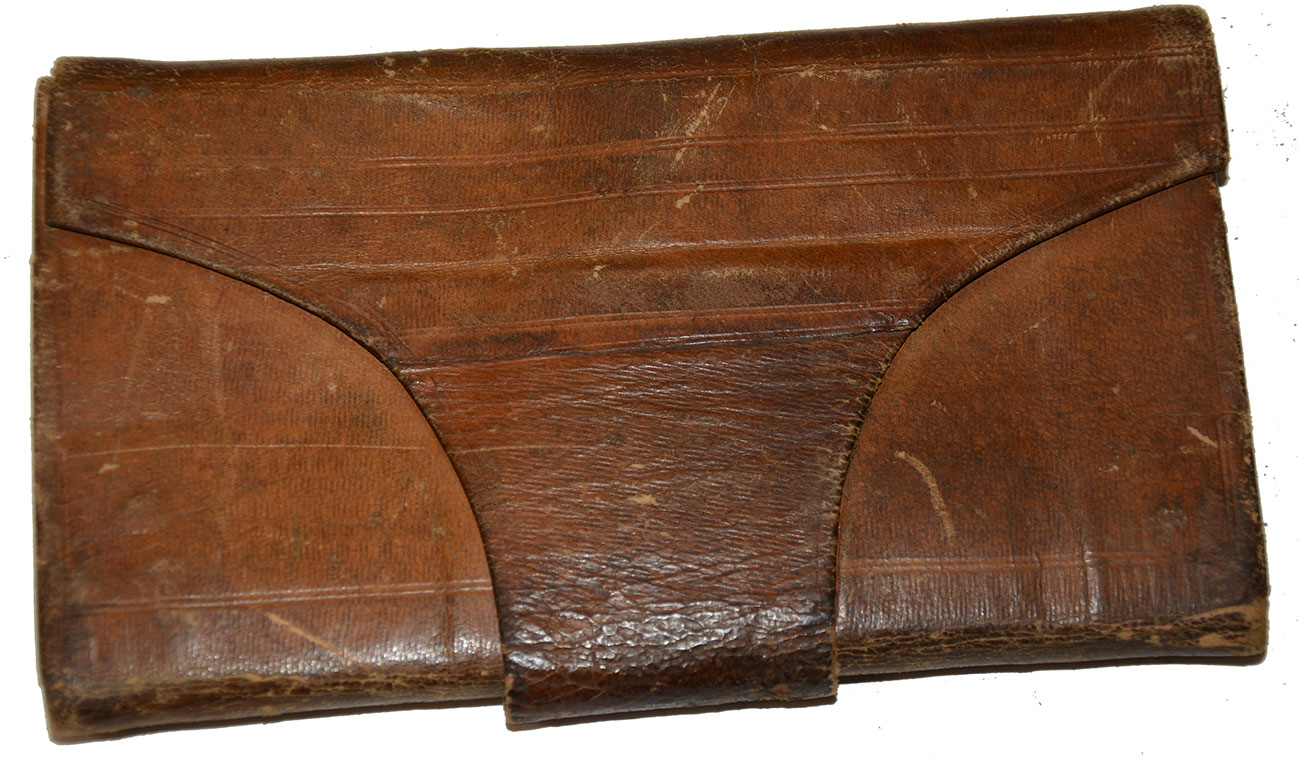
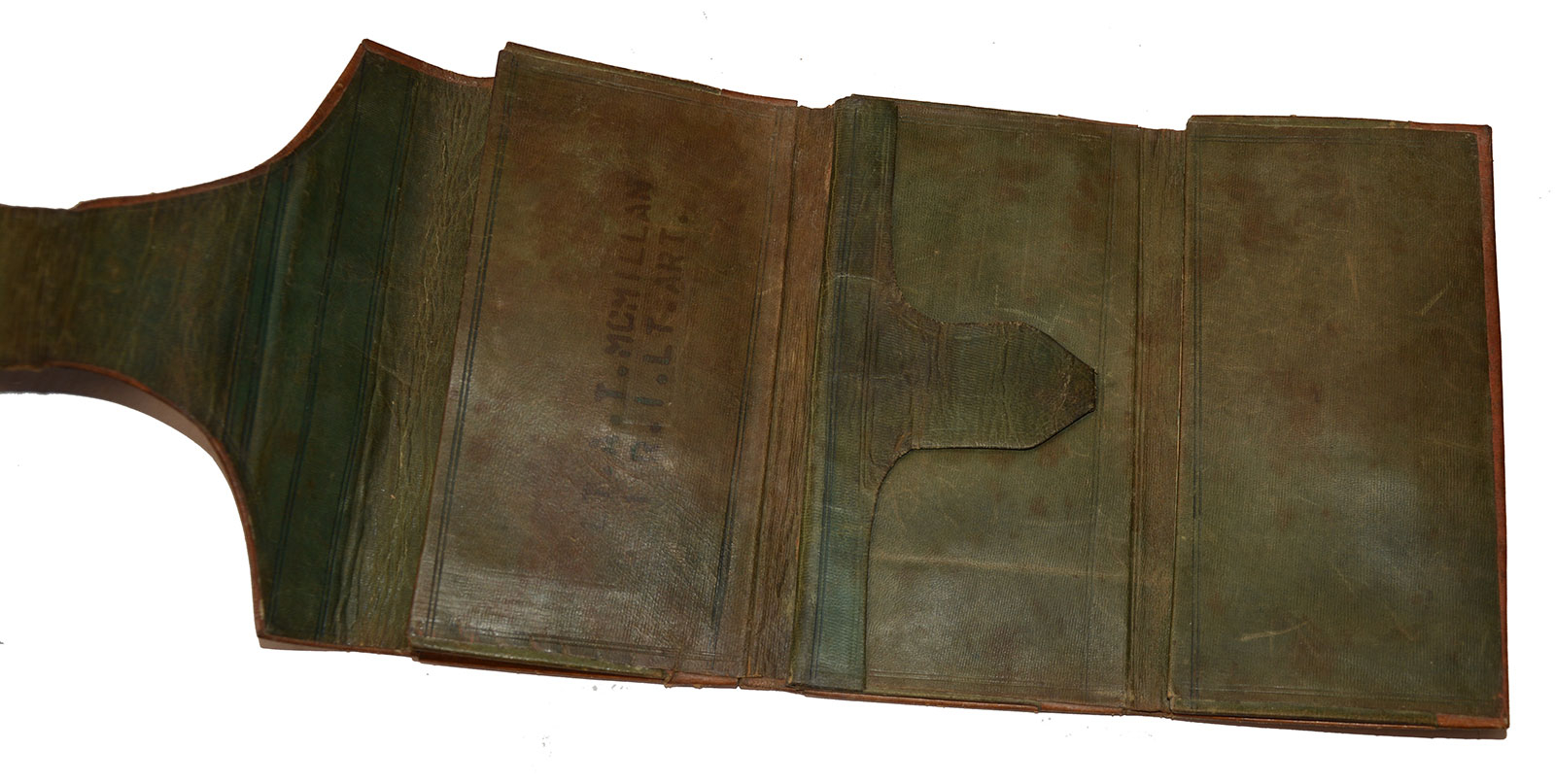
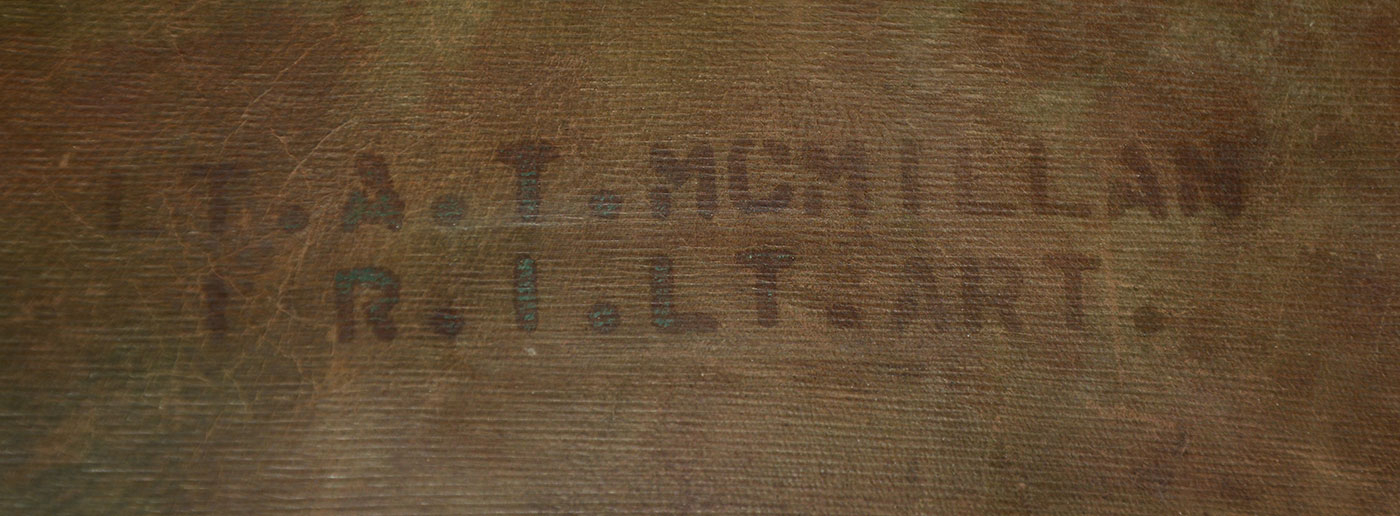
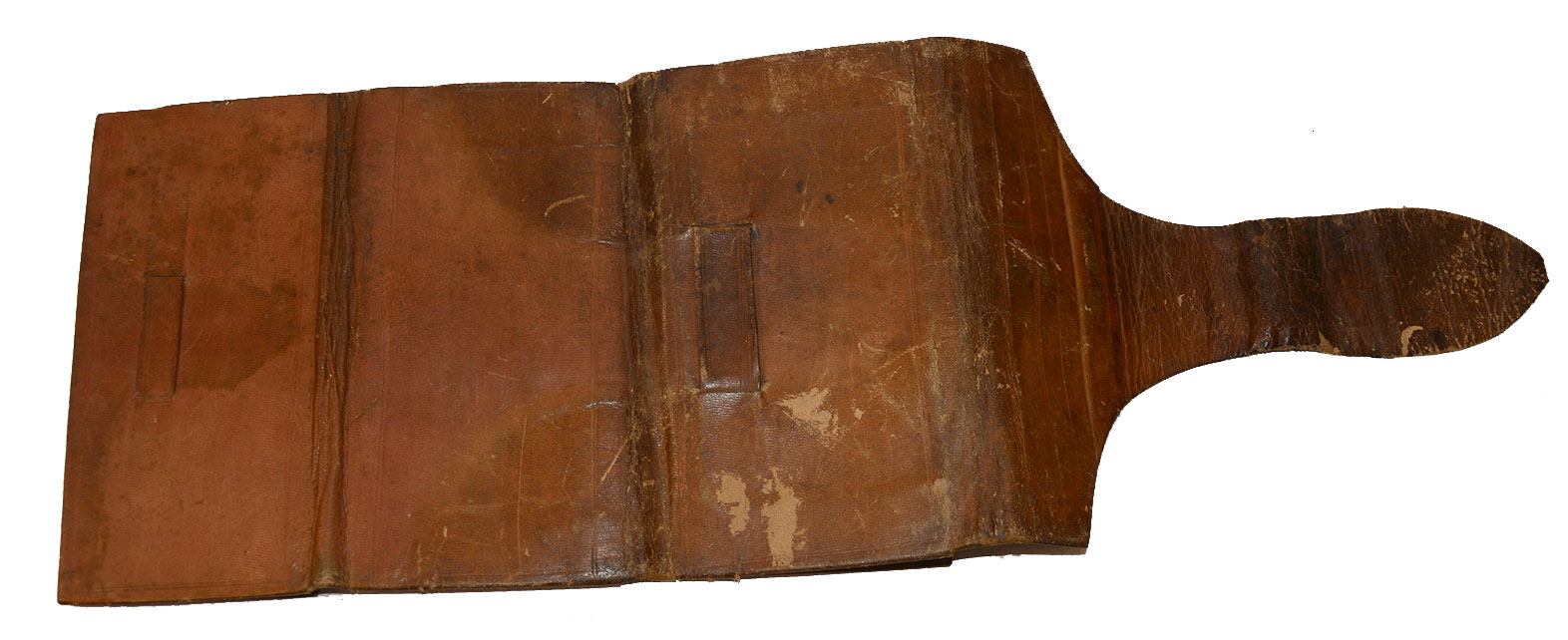
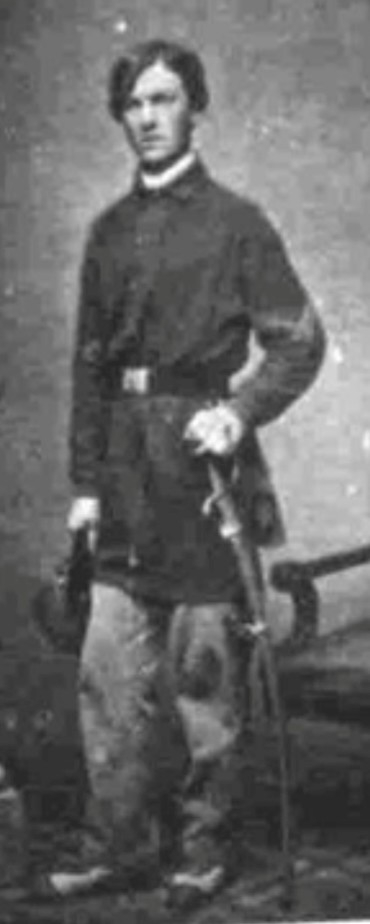
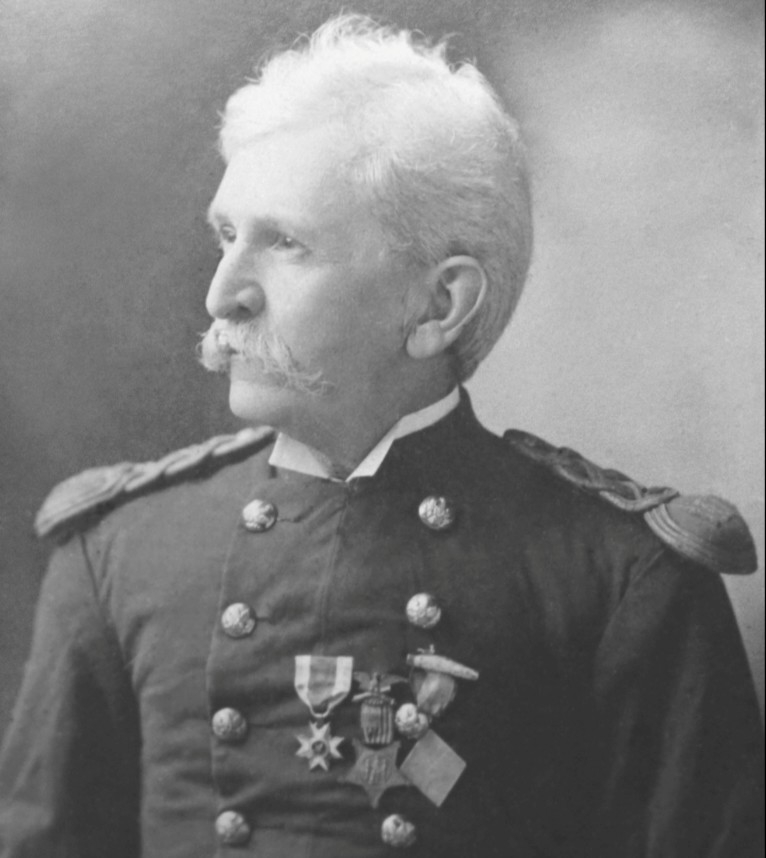
$5,500.00 ON HOLD
Quantity Available: 1
Item Code: 1268-547
This artillery officer’s group was on display in the Texas Civil War Museum and consists of regulation Union artillery officer’s frock coat, the japanned tin tube that held his officer’s commission and his billfold, faintly but legibly stenciled, “LT. A. T. MCMILLAN / 1 R.I. LT. ART.” His last name shows up in records as both McMillan and MacMillan with an “e” in some instances instead of an “a,” just for variety’s sake we suppose. In the ORs he is listed as McMillan. We have used MacMillan for consistency. As just one more twist, his middle name shows up both at Thomson and Thompson.
The frock coat is the regulation line-officer’s single-breasted, nine-button coat with four more large buttons on the rear at the top and bottom of pleats in the tails that also conceal pocket openings. As usual, the coat is lined in a faint green fabric, quilted in the chest and sides, with a single pocket in the left breast and the sleeves are lined in a plain white. The cuffs are functional, each carrying three small cuff-size buttons. The collar is a standing collar 1-3/8” tall; the sleeves have about an 8-1/2” billow at the elbow. The shoulder straps are single-border 2nd Lieutenant’s straps with red wool centers indicating artillery. The embroidered bullion borders show some faint gold color but have mostly oxidized to a muted silver. The jaceron wire along the inner and outer edges is in place, just slightly raised at one corner, and retains it gold color.
The coat shows wear and some repairs. The exterior shows very well with some very light scattered mothing on the front of the left skirt, one pencil eraser size nip on the lower right breast and another further down on the right skirt, with a smattering of small nips below that. The left sleeve shows three small moth bites about ½” long that have been backed, and couple smaller ones above that. A seam on rear left shoulder was resewn for about an inch. On the upper rear right shoulder, just behind the shoulder strap two narrow tears about 1-1/2” each have been sewn closed. The edges of the lapels down to the waist have been restitched. On the inside the lining shows some tears and some losses at natural points of contact and wear- the upper back just below the collar and around the armpits, and to the lower front edges of the skirt where the lining shows some shredding from contact with the legs in movement. Please see our photos for all of the above. The buttons are all rimmed Rhode Island state seal buttons using the anchor device, TICE RI201, with D. Evans & Co. backmarks. These were widely used by Rhode Island militia from the 1850s forward and were likely substituted for U.S. artillery officer or staff buttons. We note that McMillan had both staff duty for several months in 1864 as an A.A.D.C. (“Acting Aide de Camp,”) in the artillery brigade of the 6th Corps, but also seems to have been in the state militia after the war- a photo published in his online gravesite listing shows him in an 1870s-80s uniform, not G.A.R., though wearing G.A.R. medals.
His commission tube is a typical tinned iron tube 20” long and 2-1/2” in diameter, with removable cap, showing a warm brown lacquer finish with some scattered rubs. These were used to store an officer’s official, printed, filled out by hand, and signed commission as an officer. His billfold is brown leather with faded green interior, about 4” by 7” closed, with wide closing strap and standing loop, opening to extend to about 20” overall, including the tab, with two open top accordion pockets and one central pocket with flap. The stencil is on the face of the upper accordion pocket, which has shifted slightly toward brown. The billfold is solid, with good seam, the light brown finish showing some scattered rubs and abrasions from use.
Born in Scotland in 1840, Andrew Thom(p)son MacMillan was picked up as McMullen at age 10 in the 1850 census, living with his family in Providence, RI, where his parents ran a boarding house. In 1860, picked up as McMillen, he is living with just his mother, a shopkeeper and an older sister, a dress maker, with no occupation noted, but listed himself as a student when he enlisted in the Union army, mustering into Battery C of the 1st Rhode Light Artillery as a Corporal on Aug. 25, 1861, the date the battery as a whole mustered in. He was described as age 21, standing 5’9-3/4” with a light complexion, blue eyes and brown hair.
The battery saw extensive service and its summary history in the R.I. Register of Volunteers is extensive. Its battle honors, which it was entitled to inscribe on it colors, were: Yorktown, Hanover Court House, Mechanicsville, Gaines' Mills, Malvern Hill, Second Bull Run, Antietam, Fredericksburg, Chancellorsville, Gettysburg, Rappahannock Station, Wilderness, Spottsylvania, Cold Harbor, Petersburg, Opequan, Fisher's Hill, and Cedar Creek. At Yorktown it saw its first combat on April 5 in front of Ft. Magruder. At Gaines Mill it lost 5 killed, 21 wounded (1 mortally) and 5 missing, as well as three cannon either mired or without horses to draw them. At Second Bull Run they expended 600 rounds of shell and case shot. At Fredericksburg they lost 1 man killed and 1 gun disabled. At Chancellorsville the battery was engaged on May 2 and May 3, losing 2 killed and 3 wounded. At Rappahannock Station it expended 150 rounds, suffering 1 wounded and at Cold Harbor fought within 300 yards of Confederate lines losing 1 killed and 1 wounded. In July 1864 it took part in the move of the 6th Corps from Petersburg to protect Washington from Early, expended 78 rounds at Snickers Gap, and then joined the pursuit of Early, engaging in severe marches and suffering losses at Opequon and Fishers Hill.
McMillan’s service file says he was slightly wounded July 1, 1862, which would have been at Malvern Hill at the end of the Seven Days Battles on the Peninsula, and he was promoted Sergeant on August 13, 1862, which would have put him in charge of a gun crew. He was promoted and commissioned 2nd Lieutenant on July 26, 1863, at the end of the Gettysburg Campaign and pursuit of Lee, and a late 1863 mention of him in the Official Records has him in command of the battery’s left section. His records show him present throughout his service with the exception of a note of January 1863 saying he was absent without leave, though apparently with no repercussions- especially since he ends up with a commission. His only other absence from the battery is a ten-day leave in January 1864 and detached duty in March and again in May 1864 to the staff of the Artillery Brigade of the 6th Corps where he served as an Acting Aide de Camp. He seems to have been back with the battery in June and July 1864, but it is unclear whether he was with them or again on detached duty when he is captured at Strasburg, Va, on August 15. His place of capture is sometimes listed as Cedar Creek, which is near Strasburg. The major battle by that name was fought in October, but there were plenty of enemy scouting, patrols and small unit action in the area prior to that. He was imprisoned at Danville and while a prisoner of war his discharge as of December 1864 was revoked until he was released or exchanged. Also, while he was in captivity Battery C was consolidated with Battery G as of December 23, 1864, leading to a different battery designation in some of his records. He was transferred to Richmond on Feb. 18, 1865; paroled at Aikens Landing on Feb. 22; and, admitted to the hospital at Camp Parole on Feb.23. He was officially discharged on March 3, 1865.
After discharge he returned to Providence, where he married in 1867, listing his occupation at that point as “Photographer.” In 1870 he is still there, but as a farmer, with wife and two daughters, ages 1 year and 1 month. By 1880 he has moved to Denver to take up mining and has added a son and two more daughters to the family and has his mother with them as well. Five years later we find him with the family in St. Augustine, FL, where he is working as a clerk, and dies there in 1895 as the result of a rattlesnake bite received while hunting.
We show images of him as an artillery corporal during the war and in later uniform wearing G.A.R. medals. [sr] [ph:L]
~~~~~~~~~~~~~~~~~~~~~~~~~~~~~~~~~~~
THIS ITEM, AS WITH ALL OTHER ITEMS AVAILABLE ON OUR WEB SITE,
MAY BE PURCHASED THROUGH OUR LAYAWAY PROGRAM.
CLICK HERE FOR OUR POLICIES AND TERMS.
THANK YOU!
Inquire About ARTILLERY 2nd LIEUTENANT’S FROCK COAT, COMMISSION TIN, AND BILLFOLD OF LT. A. T. MCMILLAN (MACMILLAN) BATTERY C 1st RHODE ISLAND LIGHT ARTILLERY
Most Popular
Historical Firearms Stolen From The National Civil War Museum In Harrisburg, Pa »
Theft From Gravesite Of Gen. John Reynolds »
Selection Of Unframed Prints By Don Troiani »
Fine Condition Brass Infantry Bugle Insignia »
Large English Bowie Knife With Sheath 1870’S – 1880’S »
Imported (Clauberg) Us Model 1860 Light Cavalry Officer's Saber »
featured item
RARE EBERLE 1796 CONTRACT MARKED BAYONET
This rare bayonet is marked by the maker in a sunken cartouche with raised letters on the base of the blade reading “Eberle.” Charles Louis Eberle emigrated to the U.S. from Germany with brothers George A. and Henry J. in 1794, arriving in… (1052-86). Learn More »


